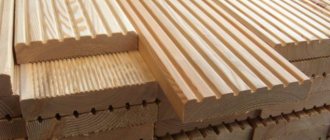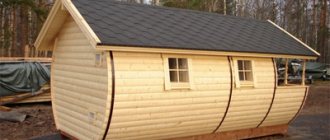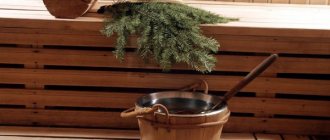A lamp in a bathhouse is not only a source of light, but also one of the ways to create a state of relaxation and peace. Therefore, along with the technical characteristics, you need to pay attention to the aesthetic side and the brightness of the light flux. Too bright lighting will not allow you to relax, and too much darkness can cause trouble. When choosing light, it is better to purchase a lighting device that gives a warm, slightly yellowish light. It promotes relaxation more than other spectrums.
Yellow light fixtures create a more welcoming atmosphere
General requirements for electrical wiring in a bathhouse
In the PUE, the design of electrical wiring and lighting in the bathhouse is regulated by Chapter 7.1, documentation GOST R 50571.11-96 and SNiP 2.08.01-89
- all electrical fittings (electrical switches and sockets, a general switch) should be located in the rest room or dressing room, where there is relatively low humidity and a more stable microclimate;
- It is prohibited to install sockets in the shower, washing or steam room, including special ones for bathrooms;
- circuit breakers or RCDs should be installed only in the dressing room;
- lamps in showers, washrooms, and steam rooms must comply with a class with increased protection from moisture;
- to power the lighting fixtures of the steam room, washing room and shower room, it should be done using a step-down transformer producing a voltage of 12 and 36 V;
- to prevent moisture from getting on the electrical wiring, it must be packaged in PVC corrugated tubes;
- In order for the cable to withstand temperature fluctuations and high humidity, preference should be given to wiring with double insulation (special sheath);
- the design of all electrical wires and cables must comply with the technical documentation for lighting in baths and steam rooms.
Attention If you do not have knowledge about working with electrical wiring and its installation, then it is better to entrust everything to professionals. This is due to high humidity and special requirements for lighting in such a room.
Requirements
Lamps installed in the steam room must not only be waterproof, but also meet the following series of technical requirements:
- Heat resistance up to 130 degrees.
- Reliable electrical insulation.
- Sufficient brightness and power.
- Environmental Safety.
- External characteristics (design).
The most extreme conditions in a bathhouse exist near the surface of the ceiling, which must be kept in mind when choosing and installing a lighting device.
Things to consider
A bathhouse, sauna, steam room usually includes several rooms - at least it has an entrance hall. Therefore, it is not necessary to select lamps with the same high degree of protection for all of them. When calculating the individual parameters of lighting devices, the following parameters must also be taken into account:
- Room area.
- Availability of a power source and its location.
- Maximum lamp power permissible under specific operating conditions (to avoid overheating).
- The number of light bulbs in one lamp.
- Required brightness.
In addition, the housing itself and the lampshade must be stable for use in such conditions. They must be made of heat-resistant material, and a sealing gasket must be placed between them to ensure tightness. Ceramic chandeliers are an ideal option.
How to position
The optimal place to install a lamp in a bathhouse is a corner or ceiling. In this case, the size of the lampshade should correspond to the dimensions of the steam room. The lighting device on the ceiling should be located higher than a person’s height, and the corner chandelier should prevent accidental contact. For any placement, light sources should be located at the maximum distance from heating devices.
Manufacturers
As always, when choosing any equipment, the question arises about the manufacturer: whose products are better to buy. Finnish companies Tylo and Harvia have long been leaders in the segment of lamps for baths and saunas. They produce heat-resistant lamps. They are worth buying for the steam room. Although their price tag is decent, they are distinguished by high quality and reliability, and have been tested more than once or twice in numerous baths and saunas.
In other rooms you can get by with more budget products. Linder lamps have more affordable prices, but their quality is lower. They are usually recommended to be installed not in a steam room, but in a dressing room, shower or locker room.
In general, there are many German, Czech and even Russian companies that make such equipment. Look for those that suit you in terms of characteristics, not the manufacturers.
Varieties
In stores you can see different lighting devices that are suitable for a bathhouse. Products come in several types.
Waterproof
For a bathhouse, it is better to choose lamps with LED or energy-saving bulbs. Devices must have additional moisture protection. When purchasing a lamp, you need to check the presence of a sealing gasket.
Heat resistant
To make the lighting inside the steam room safe for visitors, you need to choose heat-resistant structures. The housing is made of materials resistant to high temperatures
It is important that the device parts can withstand heating up to 120 °C
You should not order cheap bath lamps from China. More often they become unusable after the first warming up of the steam room. Under the influence of high temperatures, a housing made of low-quality plastic can melt, ruin the decorative finish, and get hot drops onto visitors.
Halogen
For a bath, you can use lamps with a gas mixture - halogen. The gas is contained in a sealed glass flask. Advantages of halogen lamps:
- High tightness of the housing. No moisture or dust particles get inside the device.
- Low power. The average value is from 20 to 30 watts.
- Halogen lamps create natural light that is easy on the eyes.
- Heat resistance. Since the lamp heats up to 400 °C, it does not become unusable when exposed to high temperatures.
LED
Lighting in a steam bath with LEDs (individuals or strips) is a popular option for the interior design of showers, dressing rooms and steam rooms. On sale you can find LED strips of different colors, with the possibility of remote control and additional functions.
LED strips are suitable for decorating canopies, baseboards, benches, and niches. If you don’t want to use tape, you can buy a lamp. Advantages:
- many color effects;
- durability, reliability;
- environmental friendliness;
- resistance to moisture;
- economical energy consumption;
- easy installation.
The lamps have no serious shortcomings. The devices can only be installed in the shower and dressing room. The devices do not tolerate strong heat, but if it is not possible to use other types of lamps, and the LED strip remains, you can fix it at the level of the shelves inside the steam room.
Fiber optic
Made from synthetic or glass fibers. The light inside is generated by the operation of the projector. Advantages of fiber optic tubes:
- resistance to temperature changes and prolonged exposure to moisture;
- obtaining a diffused stream of light that does not strain the eyes;
- energy saving;
- Possibility of use for different rooms;
- long service life during active use.
Using fiber optic lamps, you can lay out a starry sky on the ceiling. To do this, a niche is created in advance with holes in which luminous tubes are fixed.
What types should not be used?
Incandescent lamps must not be used in the bathhouse. The surfaces of the light bulb become very hot and if moisture gets on the glass surface, an explosion may occur. The lamp itself is easy to break if hit.
Models
When choosing different models of lamps, you also need to take into account where exactly it will be installed; air temperature and humidity are also decisive factors that are relied on when searching for a suitable option.
If the light needs to be installed in the steam room, then the main thing is not to install it in a potentially dangerous place - near the heating elements. A good option would be to place it on the ceiling or at the junction of walls.
Models of horizontal lamps at the junction of the ceiling and walls can also be called a completely suitable option. A decorative screen for corner or horizontal type lamps can be purchased in a store or made with your own hands, then you can additionally install an LED strip in the corner of the steam room and secure it to the wall using non-flammable material.
If you want to take a creative approach to decorating the rooms in the bathhouse, then you can make some lighting elements with your own hands. However, here it is worth understanding that we are not talking about assembling an electrical appliance yourself, but rather about decorating an existing one by creating additional elements. The interior of a steam room is often dominated by wooden materials, so making a grille or lampshade from wood would be a suitable stylistic solution.
Such wooden lampshades will not only serve an aesthetic function, but will also protect wall lamps from damage and direct ingress of water. In addition, with the help of a grille, the lighting will be softer, more diffused - being in the room will become even more comfortable and pleasant. There is no need to worry about the material for making such decorative elements; it is quite possible to use leftovers that were not thrown away after cladding the walls or ceilings of the bathhouse; this will also help maintain a unified style concept.
However, if you want to fill the steam room with aromas that promote relaxation and detachment from everyday problems, you can make an antique lampshade from larch or cedar; besides, these materials are also quite strong and durable.
In order to make a lampshade or grille yourself, you need to have elements for the frame and several small slats that will be attached to the top and bottom of the finished product
Of course, when making a lamp there are certain points that are worth paying attention to:
- The size of the lamp itself will dictate the length of the slats for the lampshade; there should also be no sharp corners; they must be sanded or rounded, this is necessary from a safety point of view, as well as to give the product a more aesthetic appearance.
- The shape and type of grille will vary depending on the size of the lamp itself, for example, if we need a frame for a wall lamp, then it should be made in the shape of a semicircle or rectangle; the grille for the corner lamp will be made in the form of a trapezoid.
- It is best to mount such lamps with self-tapping screws, but from a safety point of view, they must be hidden inside so that they do not cause harm when heated.
When lighting other rooms in the bathhouse, you can use lamps with less strict characteristics; traditionally, the dressing room is decorated with a chandelier, which is placed in the middle of the ceiling or several lamps installed directly in the ceiling itself.
Rules
Electrical wiring in a bathhouse is naturally different from wiring in a residential building. The room closest to the requirements is the bathroom. It also has high humidity, but the temperatures, of course, are different.
However, even in a bathhouse, not all rooms are equally problematic from an electrician’s point of view. So we would call the steam room and washing room the most “problematic”. The rest room, dressing room, bathroom and veranda do not require increased protection of wiring and devices.
Once we have already made detailed excerpts from the PUE, which mention baths, saunas or washrooms. Therefore, now we will limit ourselves to a rather condensed retelling of the rules for electrical wiring in a bathhouse.
Let's start with the location of the electrical panel. It is advisable to place it indoors and not outdoors. In this case, it is necessary to either use a dry room or ensure complete waterproofing of the shield. No pipelines (water supply, gas pipeline, sewerage) should pass near the switchboard.
According to the rules, the installation of an RCD is considered mandatory for wet rooms.
Wires should be led:
- (preferably, not necessarily) hidden in the steam room and washing room;
- open on the wooden walls of other rooms.
IMPORTANT! However, it should be remembered that in a steam room it is not advisable to run wires along the walls, even inside. That's right - make a through hole with a metal sleeve in the wall, through which wires for the lamp go into the steam room. The wires leading into the steam room must be made heat-resistant - with insulation made of silicone rubber - RKGM, PRKS
The wires leading to the steam room must be made heat-resistant - with insulation made of silicone rubber - RKGM, PRKS.
The ban on metal sleeves and corrugation applies only to steam rooms and washing rooms.
Wires can only be extended by welding, crimping, soldering or a similar method.
Switches and sockets should be located outside the steam room and washing room.
You will find a complete list of rules for wiring in a bathhouse and steam room at the link already given above.
Rules for installing lighting fixtures in a steam room
The basic rule when arranging a lighting system for a steam room is not to install devices near the stove. In other areas it is possible; their location will depend only on the owner’s imagination. The most optimal installation option is above the ceiling, but at the same time they should not interfere with the steaming of vacationers sitting on the top shelf.
Sometimes a waterproof lamp is installed in a corner due to infrequent use. This is also a good option. At the boundary of the ceiling surface with the wall, you can mount horizontal lighting devices, you can form a decorative corner screen, and attach an LED strip to a non-flammable base.
In a Russian bath you can install any devices made of heat-resistant material, the base of which is made of heat-resistant plastic, aluminum or stainless steel.
In a Finnish sauna, it is better to install devices with a ceramic base, as others will fail much faster.
Lamp grilles
If you want waterproof lamps for a bath not only to illuminate the room with high quality, but to be absolutely safe, ideally suited to the design of the room, and bring brightness to its interior, make grilles for them, for example, from wooden waste left over from building materials after finishing of saunas, baths. As a result, you will get a completely harmonious, integral picture.
If there is no waste left from finishing materials, and you want to add pleasant aromas to the steam room, then it is better to make gratings from cedar. larches. Pine can only be used if the skin of vacationers is prevented from coming into contact with the grate. The shape of the grille will depend on the placement of the lighting fixture.
Wooden lampshade for bath HARVIA lux
Heat-resistant with glass shades
On sale you can find not only glass lampshades, but also plastic ones, and we are talking about very popular manufacturers, such as Harvia. However, even the authority of such a company may not be a guarantee of quality. We came across reviews that said that such plastic products did not last long in the steam room, having melted. Therefore, we still recommend glass, although it is more dangerous if broken.
Heat-resistant lamps for saunas
It was already mentioned above that the heat resistance of the lamp is ensured by the presence of a ceramic base and a glass cap. But even this design is not recommended to be installed directly on the ceiling. Usually in steam rooms the lighting is on the wall.
At the same time, lamp manufacturers offer several options for location relative to the wall. The lamp can be adjacent to the wall (the length of the light bulb is parallel to the base), protruding (the light bulb is perpendicular to the base), or can be mounted at an angle (called “corner”, although it is not intended for mounting in the corner between walls).
Wooden lampshades: grilles and screens
An attractive, but not necessary, accessory to the lamp models described above can be a wooden lampshade, which some companies offer as a complete set.
Wooden lampshades can be found in two varieties: grilles and screens. Creative combinations are also possible.
For your information! Based on the type of installation, they are divided into wall-mounted and corner-mounted.
Grilles are structures made of slats or slats, often artistically processed, between which there are slits that allow light to pass through. Depending on the width of the gap, the luminosity may be greater or less.
Screens - the front facade of such a lampshade is a solid sheet of material (thin furniture board, plywood), in which shaped holes are made, covered with a mesh on the reverse side.
Their main function is to dim the light and also protect the glass from excess moisture. Of course, they also play the role of decoration and mechanical protection.
DIY making
Making a wooden lamp with your own hands
Making a lamp for a steam room with your own hands is difficult. To do this, you need to understand electronics and know where to find consumables. However, a homemade lighting device can be dangerous to use.
You can make your own lampshade for lighting. It will improve the appearance of the devices and protect visitors from flying fragments if the lamp explodes. Lampshades are made of metal, wood, salt, stone, plastic, glass, ceramics.
Materials and tools
To make a decorative lampshade you need to prepare:
- bars, slats;
- grinding machine;
- wood hacksaw, jigsaw or miter saw;
- screwdriver, screws or hammer with nails;
- tape measure, pencil.
To fasten individual parts, you can use wooden dowels. It is impossible to get burned on them, since the material has low thermal conductivity.
Preparation
Before you begin assembling the lampshade, the wooden blanks need to be prepared. To do this you need to perform several steps:
- Mark the bars with slats.
- Trim the pieces of wood with a miter saw, jigsaw or wood hacksaw.
- Clean the surfaces and ends with a grinding machine.
All wooden surfaces must be coated with a special antiseptic to protect them from the destructive effects of moisture.
It is important to choose a composition that will not release harmful substances when heated strongly.
Manufacturing
The process of making a homemade lampshade is simple:
- Draw the finished lattice on a piece of paper to better visualize the finished product.
- Connect individual wooden elements. Possible types of fasteners are finishing nails, self-tapping screws, and dowels.
Decoration
Many bathhouse attendants are sure that it is unacceptable to use various paints and varnishes to cover wooden surfaces in the steam room.
Their opinion is based on the fact that coloring compounds emit harmful substances when heated strongly, but wooden surfaces without protection will quickly darken and lose their attractiveness.
To protect wood from darkening, the formation of fungus, mold, and moisture damage, you can use special impregnations. If there are concerns about the use of drying oil, it is recommended to use paraffin oil for the steam room.
In addition to special impregnations, you can use varnishes and coloring compounds
It is important that the packaging contains an inscription stating that the paint composition is suitable for steam rooms
Review and characteristics of ceramic bath lamps
Ceramic lamps are the most common type of fixture. They are widely used for lighting all types of premises, including bathhouses. The base of such devices is made of ceramic, and the lampshade is made of glass. There are models made of plastic, for example, Harvia. But, despite the quality of the manufacturer, such lampshades melt in the steam room. For this reason, it is recommended to give preference to glass shades, although there is a risk of getting cuts if the lamp is accidentally damaged.
The glass cover in combination with the ceramic base protects the lamp inside from exposure to high temperatures and moisture penetration.
Manufacturers offer several installation options:
- Parallel - the lamp fits tightly to the wall, and its bulb is located parallel to the base.
- At an angle - the design is called “corner”, although it is not a type of corner lamp; in a bathhouse it is installed at an angle to the wall.
- Perpendicular – the light bulb is positioned perpendicular to the base.
Despite the declared heat resistance, ceramic lamps are not recommended to be installed directly on the ceiling base. Installation can be done on the wall at the top of the room.
Ceramic sauna lamp TDM Electric.
Decorating with lattice
Most bathhouses located on personal plots, as well as saunas inside country houses, are decorated with wood - most often with lining made from various types of wood. In this case, you want to complement the interior with natural elements in order to maintain the integrity of the picture. Therefore, decorating lamps with wooden grilles has not only practical, but also aesthetic significance.
From a practical point of view, the grille protects the space from splinters if the lamp is damaged. The appearance complements the peaceful and cozy atmosphere. Light breaking through individual cells loses its annoying brightness and diffuses softly and widely, creating interesting shadows and reflections.
On the market of specialized bath products you can find many beautiful and unusual grating options. But if you wish, you can do them yourself.
How to make a screen for a lamp
To obtain diffused light and the desired aesthetic effect, the moisture-resistant lampshade used in the steam room and/or wash room is decorated with a special screen.
Grilles and screens are usually installed for lamps in the steam room.
Making a decorative screen from wood is easy. To work you will need:
- a piece of timber or board - for the base;
- wooden slats;
- hacksaw;
- hammer;
- electric drill;
- fastening material;
- sandpaper;
- ruler and/or tape measure;
- antiseptic.
Scheme of a ventilated lampshade for a bath
First you need to make a base from a board or timber. For example, cut out 2 parts of the same shape. You need to attach “ears” to them in order to hang them on the wall later.
The base for the wall lamp can be made in the shape of a semicircle, square or rectangle. For a corner sconce, it is better to take a triangle or trapezoid as a basis.
The size of the decorative screen is calculated according to the dimensions of the lighting fixture, which must fit freely inside.
Installing a lamp in a bathhouse
All wooden elements must be carefully sanded before assembly. Sand the ribs and sharp edges. It is advisable to hide the fasteners inside during assembly. This will protect against accidental contacts and give the finished product a stylish look.
Wooden slats are attached on top of the base using screws, self-tapping screws and/or small nails. They can be placed at an angle, vertically, etc. If you show your imagination, you will get a stylish sconce that will decorate the interior of the bath room.
Small gaps should be left between the slats to allow light to pass freely. Instead of slats, you can use a piece of plywood. On it you can cut out a pattern from simple components according to preliminary markings.
Screens can be of various designs, for example, with carved screens
All wooden materials for making the screen must be pre-treated with an antiseptic and moisture-proof compounds. Fasteners are used only from stainless materials.
It's better to make a removable screen. This will allow you to periodically remove it for thorough drying and minor repairs. For example, to replace accidentally damaged items. The removable screen will make it easier to care for the lamp and replace lamps that have become unusable.
Glue or paint coatings must not be used. When exposed to temperature and moisture, they will emit harmful fumes and unpleasant odors.
The question of which lamps to use in the bathhouse is decided by each owner independently. The main thing is to make the right choice. When installing and using various lighting devices, you should strictly follow the attached instructions and safety rules.
Salt lamps
A variety of salt lamps can be used in the bath.
Modern salt lamps for baths help achieve such wonderful effects as:
Salt lamps are industrially manufactured from hand-mined Himalayan salt. The main elements of a salt lamp are:
Special mention should be made about lampshades for salt lighting fixtures. They are made from Himalayan salt crystals. Such lampshades have different sizes, shapes and colors. Therefore, they are easy to choose for any original interior.
Salt lighting in the lampshade can be placed in the corner
High-quality salt lamps are durable, practical, and silent. The main care for such a device is keeping it clean and periodically changing the light bulb.
Note! The beneficial properties of the Himalayan salt from which the lampshades are made are preserved for many years. The intensity of salt radiation remains at the original level.
Salt lamps create a favorable internal atmosphere in various rooms of the bathhouse. This helps get rid of stress and fatigue, calm the nervous system and saturate the body with vital elements.
What lighting should look like in a bathhouse in different rooms
You need to understand that a bathhouse is a room where safety precautions should come first. And the choice of lamps plays an important role.
Lighting in the steam room
There are special requirements for lighting in the steam room, because... This is a room with high temperature and humidity. In addition, the soft half-light in the steam room will help you relax and fully enjoy the bath procedures.
Proper lighting in the steam room is the key to quality bath procedures
There are the following recommendations for installing lamps in a steam room:
- Lamps are best installed in corners or directly under the ceiling of the bathhouse.
- LED bath lamps are most likely responsible for the extraordinary appearance of the steam room. They are very resistant to high temperatures, therefore, they can even be installed on the fence around the sauna heater.
- All glass lamps must be hidden using special grilles or heat-resistant platforms.
Lighting in the washing room
There is no high temperature in the washing room, but the humidity remains. In the shower we wash away the heaviness of the steam room.
You can wash yourself here
Therefore, in this room, the lighting should be bright, because it is no longer intended for relaxation. This is not a place to relax, but to wash.
The washing room has its own recommendations:
- Lamps should be located as far as possible from wet places.
- Even the most basic detail, such as a switch, should be outside the washing area.
- Light for a bath plays a very important role, but you should worry about safety precautions more than choosing beautiful lamps. All devices responsible for lighting must be covered with special shades.
The lighting in the waiting room can be anything. The temperature and humidity of this room allows you to attach both lamps and large lamps there. The brightness of the light depends only on your desire.
LEDs
Another type of light source is LEDs. They are economical and durable and also operate from a 3 V source. They are most often chosen for local illumination of elements of a bath interior. The range of LED lamps created specifically for saunas is large.
Warm yellowish lighting in the steam room, decorated with natural materials from RoHol, and in the compact sauna from Kung Sauna, promotes relaxation more than other shades in the spectrum.
To decorate the spacious sauna of the Lanerhof hotel (Italy), hidden background lighting was chosen, delicately emphasizing the texture of natural wood, natural stone and polished metal











